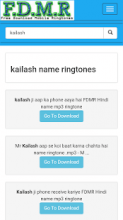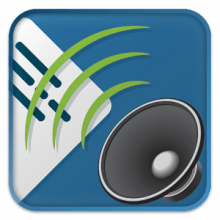Freedom Scientific Fusion 2019 V1906 (June2019)
Fusion™ is the ultimate accessibility tool for individuals with any level of vision impairment. Fusion provides the best of both worlds – ZoomText®, with its screen magnification and visual enhancements for screen viewing ease, coupled with the power and speed of JAWS® for screen reading functionality. By blending ZoomText and JAWS together, Fusion has flexible, high-quality speech using Eloquence and Vocalizer Expressive, powerful keyboard access including navigation on the web, and a wide range of customization options. Fusion is the perfect solution for schools, agencies, training centers, and businesses where individuals with vision loss are served. A single installer gives access to both ZoomText and JAWS individually, or together when run as the combined solution.
Flexible Magnification
Full range of magnification levels up to 36x (up to 60x in Windows 8). Levels include: 1x to 8x in steps of 1, 10x to 16x in steps of 2, 20x to 36x in steps of 4, and fractional powers of 1.25x, 1.5x, 1.75x and 2.5x. 30 levels of magnification in ZoomText 10.1: 1x to 2x in steps of 0.2; 2.25x, 2.5x, 2.75x, 3x, 3.5x, 4x, 4.5x, 5x, 6x, 7x, 8x; 10x to 16x in steps of 2; 20x to 36x in steps of 4; 42x, 48x, 54x, and 60x.
xFont Magnification
xFont technology displays high-definition text that’s easy to read at all magnification levels. Smooth, bold and condense settings allow you to fine-tune the thickness and spacing of text for added legibility. With other screen magnifiers, the clarity of text is degraded in the magnified view. As a result, many fonts (text characters) are difficult to read, including small fonts, serif and italic fonts, and cursive fonts. With ZoomText’s revolutionary ‘xFont’ technology, you’ll see amazingly clear text at all magnification levels. All types and sizes of text are displayed with high-definition clarity, in all of your applications. Once you’ve seen xFont, no other screen magnifier will do.
Automatic Document Reading
ZoomText’s AppReader automatically reads documents, web pages and email within the parent application. ZoomText’s DocReader reads documents in a special environment where text is reformatted for easier viewing. ZoomText offers a variety of tools for quick and easy reading of documents, web pages and email. Each of these tools has unique characteristics that lend themselves to particular reading tasks.
AppReader
AppReader reads documents, web pages and email, within the parent application. As you enter and exit AppReader your view of the document does not change, providing quick and seamless transitions between document editing and reading. AppReader can automatically read through the entire document, or you can manually read by word, line, sentence or paragraph. As reading occurs, each spoken word is highlighted. AppReader settings allow you to customize the appearance of word highlighting, including the highlight shape, size, color and transparency level.
New Features in both ZoomText 2019 and Fusion 2019
Faster Startup with Grace Period Authorization
Fusion 2019 and ZoomText 2019 introduce a new concept to help ease the delay in response when Fusion and ZoomText first launch and look for authorization. In prior versions, Fusion and ZoomText would not fully start until proper authorization was found. Since Authorization can include searching for a network license, the amount of time before Fusion or ZoomText started speaking could be significant. While it is not possible to speed up this period directly, the authorization process will now be completed simultaneously to startup. As Fusion and ZoomText search for authorization, it enters a new “grace period” authorization state which provides limited functionality, similar to what is available on the logon screen, so you can use speech and braille while authorization discovery takes place. Once the authorization check has finished, Fusion and ZoomText then use the correct feature set based on the license.
Favorite Zoom Levels
Fusion 2019 and ZoomText 2019 allow you to zoom in and out faster using the new “Favorite Zoom Levels” feature. With Favorite Zoom Levels, you select the levels that are useful to you and unselect the levels that are not.
You can enable and select Favorite Zoom Levels by doing the following:
- On the Magnifier toolbar tab, select the Zoom Windows button, which appears in the lower-right corner of the Zoom Windows group.
- Select the Magnification tab.
- In the Use these zoom levels combo box, choose Favorite Zoom Levels Only.
- Navigate to the Favorite Zoom Levels list box. Check the levels that you want to use and uncheck the levels you do not want to use.
- Click OK.
When Favorite Zoom Levels are enabled, you can zoom in and out using the standard Zoom In and Zoom Out commands, mouse wheel zooming, or the Zoom Level spinbox on the Magnifier toolbar.
Improved Remote Desktop Support in Fusion
When a Fusion installation is activated with a license that includes the Remote Desktop Add-on; Fusion, ZoomText and JAWS can be used in remote sessions running under Citrix XenDesktop/XenApps or Windows Remote Desktop Connection. The following improvements and fixes have been made in ZoomText’s Remote Desktop Support.
- After exiting Fusion or ZoomText on the client machine, if Fusion or ZoomText were still running on the server machine the server machine could become unstable. This instability could include screen corruption and inability to control and exit Fusion on the server machine. This problem has been fixed.
- When the client and server instances of Fusion or ZoomText were both configured to use the Overlay zoom window, both Overlay windows would be simultaneously displayed. Only the Overlay window for the active desktop is now displayed.
- When using AppReader on the server machine, extraneous text would be spoken at the end of each spoken sentence. The extraneous text is no longer spoken.
- When adjusting Fusion settings on the server machine, some adjustments would not take effect. These settings are now properly applied.
- When starting AppReader Text View in an instance of Microsoft Word running on the server machine, extra text and menus would appear on top over the Text View. This problem no longer occurs.
- When running Microsoft Word on the server machine, the instance of ZoomText running on the client would not track the text cursor in Word. The Word text cursor is now reliably tracked.
New Features in ZoomText 2019 Only
Home Annual License
Home Annual Licenses for ZoomText Magnifier/Reader are now available to customers in the United States for $80 per year. The Home Annual License is available for purchase in Freedom Scientific’s online store.
Improvements in Chrome and Firefox
- In Chrome and Firefox, the text cursor and program focus are now tracked, highlighted and echoed with greater accuracy and reliability.
- In Chrome and Firefox, AppReader’s Next Paragraph command (UP arrow) and Previous Paragraph command (DOWN arrow) are now working.
- In Chrome and Firefox, Mouse Echo is now working in more areas.
Improvements in Microsoft Office 2016 and Office 365
- In Word documents, AppReader now skips over text that is marked as deleted.
- In Word documents, startup time for AppReader Text View is now 2 seconds or less.
- In Word documents, ZoomText now reliably tracks to the text cursor when the document receives focus.
- In Word’s Review pane, ZoomText now displays a Cursor Enhancement on the text cursor.
- In Office applications, ZoomText now reliably tracks to the program focus after closing menus and dialog boxes.
- In Office applications, ZoomText now saves and applies Application Settings reliably.
- In Outlook, when opening email ZoomText would announce the email differently depending on how the email was opened, that is, by using the mouse or using the keyboard. The announcement of email is now consistent regardless of how the email is opened.
Improvements in Adobe Reader DC
- In Adobe Reader, AppReader’s Next Page and Previous Page commands are now working. Press PAGE DOWN to navigate to the next page and PAGE UP to navigate to the previous page.
Improvements in Skype
- In Skype, the text cursor and program focus are now tracked, highlighted and echoed with improved accuracy and reliability.
- In Skype, Mouse Echo now reads the item under the pointer in Skype’s Suggested list of contacts.
Improvements in WordPad
- In WordPad, AppReader start up and navigation is much faster and more responsive. AppReader also highlights the complete spoken word.
Improvements in Twitter PWA
- In the Twitter Progressive Web App for Windows 10 (also known as Twitter PWA), ZoomText now tracks and echoes the text cursor when typing a tweet.
Support for Enhanced Vision’s Transformer Camera and Software
- Enhanced Vision’s Transformer camera and software can now be used with ZoomText’s Camera feature.
Improved Remote Desktop Support in ZoomText
When installed as part of a Fusion product that includes the Remote Desktop Add-on, ZoomText can be used in remote sessions running under Citrix XenDesktop/XenApps or Windows Remote Desktop Connection. The following improvements ad fixes have been made in ZoomText’s Remote Desktop Support.
- All of ZoomText reading features now work in the instance of ZoomText that is running on the server machine.
- The voice used by the instance of ZoomText running on the server machine is now determined by the voice selected in the instance of ZoomText running on the client machine. Note: This requires that the selected voice is installed on both the client and server machines.
- When using AppReader in an application running on the server machine, if you paused AppReader in the middle of a line of text and then resumed reading, AppReader would start reading at the beginning of the line of text instead of where reading was paused. AppReader now resumes reading at the word where reading was paused.
- When using AppReader in applications running on the server machine, if you pressed the Tab key to switch between App View and Text View while AppReader was reading, the view would switch but reading would pause. AppReader now continues reading when switching between App View and Text View.
- In a remote desktop session, if ZoomText was exited and restarted on the client machine, the instance of ZoomText running on the client machine would fail to connect with the instance of ZoomText running on the server. The instances of ZoomText running on the client and server machines now reliably reconnect.
- Application Settings a now be saved and applied in the instance of ZoomText and applications running on the server machine.
Miscellaneous Improvements and Fixes
- In list views, ZoomText now announces the correct column title when navigating across the columns for each line item.
- On certain systems, when starting ZoomText the screen would turn black. This problem was related to specific graphics cards and drivers. This problem has been fixed.
- In Windows 10, when the Windows Settings dialog was open, ZoomText’s Mouse Echo feature would not work. This problem has been fixed.
- On multiple monitor systems, ZoomText would sometimes announce the incorrect Zoom Level. This problem has been fixed.
- On multiple monitor systems, when running in the Windows 10 Lock Screen, using the Zoom In and Zoom Out commands would cause ZoomText to restart. This problem has been fixed.
- On a multiple monitor system, when using ZoomText’s Next Sentence and Previous Sentence text reading commands, ZoomText would erroneously switch the active window between monitors. This problem has been fixed.
- In CHM help systems, ZoomText Focus Enhancements now follow the focus when navigating between links in Help topics.
- In CHM help systems, when expanding and collapsing books in the table of contents, ZoomText now announces the name of the book and the expanded or collapsed state.
- .TMP files are no longer left behind in the C:\users\{user}\Music folder when using the ZoomText Recorder.
New Features in Fusion 2019 Only
Screen Shade for Additional Privacy
First introduced in JAWS 2018 release, we have added this feature now for Fusion 2019. For additional privacy, use the Fusion Screen Shade to prevent others from seeing what you are typing or reading by turning the screen black. This feature is available in Windows 10 and Windows 8.
To turn on the Screen Shade, press INSERT+SPACEBAR followed by the F11key, or triple tap with three fingers on a touch screen. Alternatively, Screen Shade can be toggled on or off using Quick Settings (INSERT+V). Once enabled, the contents of your screen can no longer be seen. The Screen Shade remains active until toggled back off, or Fusion is restarted. Screen Shade can also be turned off by doing a right mouse click.
Note: Screen Shade is strictly a privacy feature and will not increase the battery life on a laptop or tablet.
Separation of Office Scripts
The JAWS scripts used as part of Fusion for Microsoft Office support for Word, Outlook, and Excel have been separated into different script sets which now load depending on the version of Office currently running. This makes it much easier to make continued improvements to Office 365 support going forward without the risk of breaking Fusion functionality in previous versions of Office for users who still rely on these older versions. If you are running Office 2016 or Office 365, and the version number includes a build number of build 10000 or higher, the newly created Office settings for Word, Outlook, and Excel should be loaded when you run those applications. If you are running earlier Office versions, Fusion should load the Word Classic, Outlook Classic, or Excel Classic settings.
To verify the version and build number of office you are using, press CTRL+INSERT+V. This command will also indicate if you are running a retail or subscription version of Office. To verify which Fusion settings are loaded, press INSERT+Q.
Improved Performance in Office 365 Applications
With the changes made to separate the Office 365 support from the scripts for previous Office versions, we are now able to take advantage of more UIA functionality provided by Microsoft. There is also much less decision making that needs to be done in the scripts since there are no longer other office versions to be considered. As a result, users should notice greatly improved performance and responsiveness when using current versions of Word, Excel, and Outlook. A few areas where users may notice increased responsiveness include:
- Navigating large documents in Word that contain a lot of markup such as footnotes, endnotes, comments, tables, and so on.
- Editing data and formulas in Excel.
- Navigating large message folders in Outlook.
For braille users, document spacing and formatting are now more accurately indicated on the braille display. This includes indents, outdents, and tab stops. We have also addressed several issues with the braille cursor not always being positioned where expected, which made it difficult to sometimes edit using braille.
If you are using a braille display with status cells, it will now also be easier to tell if text is centered or right justified by displaying “cj” or “rj” in the first two cells when focused on the line containing the centered or right justified content.
Notification of Spelling Errors in Word 365
JAWS was the first screen reader to introduce Spelling error detection in Microsoft Word around 1998. This feature indicated when the cursor moved into or out of a spelling or grammatical error while navigating and was also able to count the errors on the current line. These errors could also be marked in Braille with dots 7 and 8. However, the ability to count the errors and mark them in braille adversely affected the responsiveness of navigating the document and was turned off by default.
The improvements to this feature in JAWS 2019 and Fusion 2019 now offer the following above and beyond the prior functionality:
- Play a buzzer sound during typing, when you press SPACEBAR after entering a misspelled word.
- Reliably underline errors in braille or count the errors on the line navigated to without any decrease in responsiveness.
- Detect advanced proofing issues, not just spelling and grammar errors.
- Read the error in-line with the text as you navigate by line, similar to how Fusion indicates other text attributes such as bolded text, indicating the error with speech, sound or voice change (using the Speech and Sounds Manager).
To configure whether or not the buzzer sound is heard when SPACEBAR is pressed after mistyping a word, open Quick Settings (INSERT+V) from Word or Outlook and select or clear the “Spelling buzzer on mistyped words” check box. This option is available when using Fusion with Office 365 versions higher than 16.0.10000.
The other Spelling options in the Microsoft Word Quick Settings, “Spelling error detection” and “Grammatical error detection,” currently remain the same. They allow you to cycle Spelling and Grammar options between off, hearing spelling/Grammar errors as you navigate by character, word, line, or Say All, or hearing spelling/Grammar errors plus count.
Speak Character Phonetically After Pause During Character Navigation
As you navigate by character, Fusion will now speak the phonetic representation of letters if you pause for a brief period of time. This enables you to immediately hear a letter spoken phonetically without the need to perform an additional command.
By default, Fusion speaks the character phonetically after a one and a half second pause. To change the amount of time Fusion waits before the phonetic announcement, or to completely turn off this feature, do the following:
- Press INSERT+6 on the number row to open Settings Center.
- If you want changes to only apply to a particular application, select it from the Application list. Otherwise, press CTRL+SHIFT+D to load the default settings file.
- Type “Phonetic.”
- Press DOWN ARROW to move to “When pausing after character navigation, speak character phonetically,” then press SPACEBAR to cycle through the available options.
- Select OK to exit Settings Center.
Fusion also offers a manual option to speak phonetics continuously as you navigate by character. Pressing the Say Character Keystroke (NUMPAD 5) twice quickly toggles this feature on and off. If you are using the manual option for all letters, the pause announcement will not occur.
Audio Ducking Support for Windows 10 version 1803 and Higher
The Fusion Audio Ducking feature is now supported in the Windows 10 Spring 2018 Creators update (version 1803) and higher. Audio Ducking causes the volume of other programs to be lowered while Fusion is speaking. For example, if you are listening to music and Fusion begins talking, the volume of the music will be slightly lowered so you can comfortably hear Fusion and then raised back to its current level when Fusion stops talking.
By default, audio remains at the same level as Fusion speech. To enable Audio Ducking, open the Startup Wizard from the JAWS Help menu and select the “Lower the volume of other programs while Fusion is speaking” checkbox located on the Speech Settings page. Alternatively, Audio Ducking can be turned on through Settings center by doing the following:
- Press INSERT+F2, and select Settings Center.
- Press CTRL+SHIFT+D to load the Fusion default settings.
- In the Search edit box, type “volume” without the quotes.
- Press DOWN ARROW to move to “Lower the volume of other programs while Fusion is speaking” in the filtered search results in the tree view.
- Press SPACEBAR to toggle this option.
You can also press INSERT+SPACEBAR followed by D to quickly toggle Audio Ducking on or off. The current setting will remain in effect until you press the layered keystroke again or restart Fusion.
TAB Key No Longer Echoed
For users who leave Typing Echo enabled, Fusion will no longer announce the TAB key by default. This means you will not constantly hear “ALT+TAB” while switching between applications or hear “TAB” spoken each time as you move through links on web pages.
Note:If you prefer to have the TAB key spoken, or you would like to mute other keys such as SPACEBAR, ENTER, or ESC, open Settings Center and search for “manage key labels”. For more details, refer to this support article on using the Manage Key Labels feature.
Announce Multi-line Edit Fields
Fusion 2019 can now indicate when focus moves into a multi-line edit field. To enable this announcement, select the new “Announce multi-line edit” option located in the Miscellaneous group in Settings Center.
New Support for Grade 1 Braille Input
Fusion now supports grade 1 literary braille input for languages such as English that offer more than one type of braille output. For example, if you open the Braille Translation group in the JAWS Settings Center and set the output to Unified English Braille Grade 1, you will now be able to choose between computer braille or Unified English Braille Grade 1 for input.
Skype
Skype now offers three options on Windows 10.
- You can continue using Skype Classic which is version 7 and works very well with Fusion. Note that support for Skype Classic has ended as of November 2018, so you will eventually be required to update. Visit the Skype website for more details.
- You can download and install the new Desktop version 8, which is now supported in Fusion. See details below.
- You can install the Universal App from the Microsoft Store. However, this is the least accessible at this time and we recommend you install Skype 8 for the best support.
For users moving to Skype 8, please be certain to download the version referred to as “Skype for Windows” which works well on Windows 10. Note that the Universal App we are not recommending is referred to as “Skype for Windows 10”.
For those using Skype version 8, we have added some additional keystrokes to help with navigation since these options are not offered in Skype. These commands are:
- Move to the chat entry field: CTRL+INSERT+E
- Move to the chat history list: CTRL+INSERT+Y
- Move to the conversations list: CTRL+INSERT+N
You can also use the Fusion commands INSERT+W and INSERT+H while focused on Skype for a list of most of the keyboard commands you would want to know when using Skype. For a full list from Microsoft, please visit the Skype Hotkeys Web Page.
Tip: You can assign a keystroke such as ALT+CTRL+S to the Skype icon on the Desktop to quickly open Skype to answer an incoming call. If you are in another application and you receive an incoming call alert, you can press your shortcut keystroke to open Skype, press INSERT+UP ARROW or INSERT+TAB to read the caller information, and then press CTRL+SHIFT+P or use TAB to choose Answer or Decline.
Help Improve Freedom Scientific Products
Fusion 2019 includes a new option which allows us to collect anonymous usage information that is generated as you use the software for your daily tasks. This data helps us continue to make improvements as well as more easily locate and address problems. Collected data includes the Fusion version, operating system version, language, country, as well as information on various Fusion settings such as the current synthesizer, braille display, and braille table.
If you choose to participate, no spoken or braille content is collected and no data is shared with any parties outside of Freedom Scientific. The data we collect strictly helps us better understand how our software is being used in the field so we can quickly make enhancements to features being used the most by our customers. If you choose not to participate, then no usage data is collected and transmitted.
You can change your selection at any time by doing the following:
- Press INSERT+6 on the number row to open Settings Center and press CTRL+SHIFT+D to load the default settings file.
- Navigate to Miscellaneous in the tree view and press RIGHT ARROW to expand the group.
- Use the SPACEBAR to select or clear the “Submit Anonymous Usage Data” check box.
- Press ENTER to save your change and close Settings Center.
You can also choose whether or not to participate in this program through the Startup Wizard located in the JAWS Help menu.
Important notice:
The crack is provided just for educational purposes, if you can, you must buy this program from Freedom Scientific
If you want to learn the installation and cracking procedure of freedom scientific products downloaded from our website, please read this article for detailed step by step instructions.
Download:
- 9290 reads






